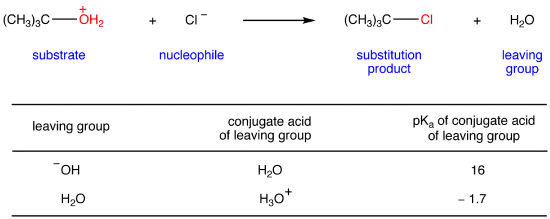Activation
- Page ID
- 16563
Increasing the leaving group ability of a leaving group by modifying it chemically is called activation. Empirically, the leaving group ability of a leaving group is a function of its base strength. The lower the base strength of a leaving group, the greater its leaving group ability.
eg:

Br ¯ is a weaker base and, therefore, a better leaving group than Cl¯.
To activate a leaving group, the compound carrying it is subjected to a reaction that converts the leaving group into one that is less basic.
eg:

Alcohol 1 can be converted to alkyl halide 2 by treating it with HCl.

The net reaction is nucleophilic substitution:

However, when 1 is treated with Cl¯, no reaction occurs even at high temperature.

The reason is OH¯ is a weak leaving group.
The reaction of 1 with HCl occurs in two stages.
Stage 1: Activation

The acid-base reaction converts 1 into an oxonium ion (3).
Stage 2: Nucleophilic Substitution

Water is a much better leaving group than OH¯. Consequently, 3 in which the leaving group is water undergoes nucleophilic substitution with Cl¯, whereas 1 in which the leaving group is OH¯ does not.


